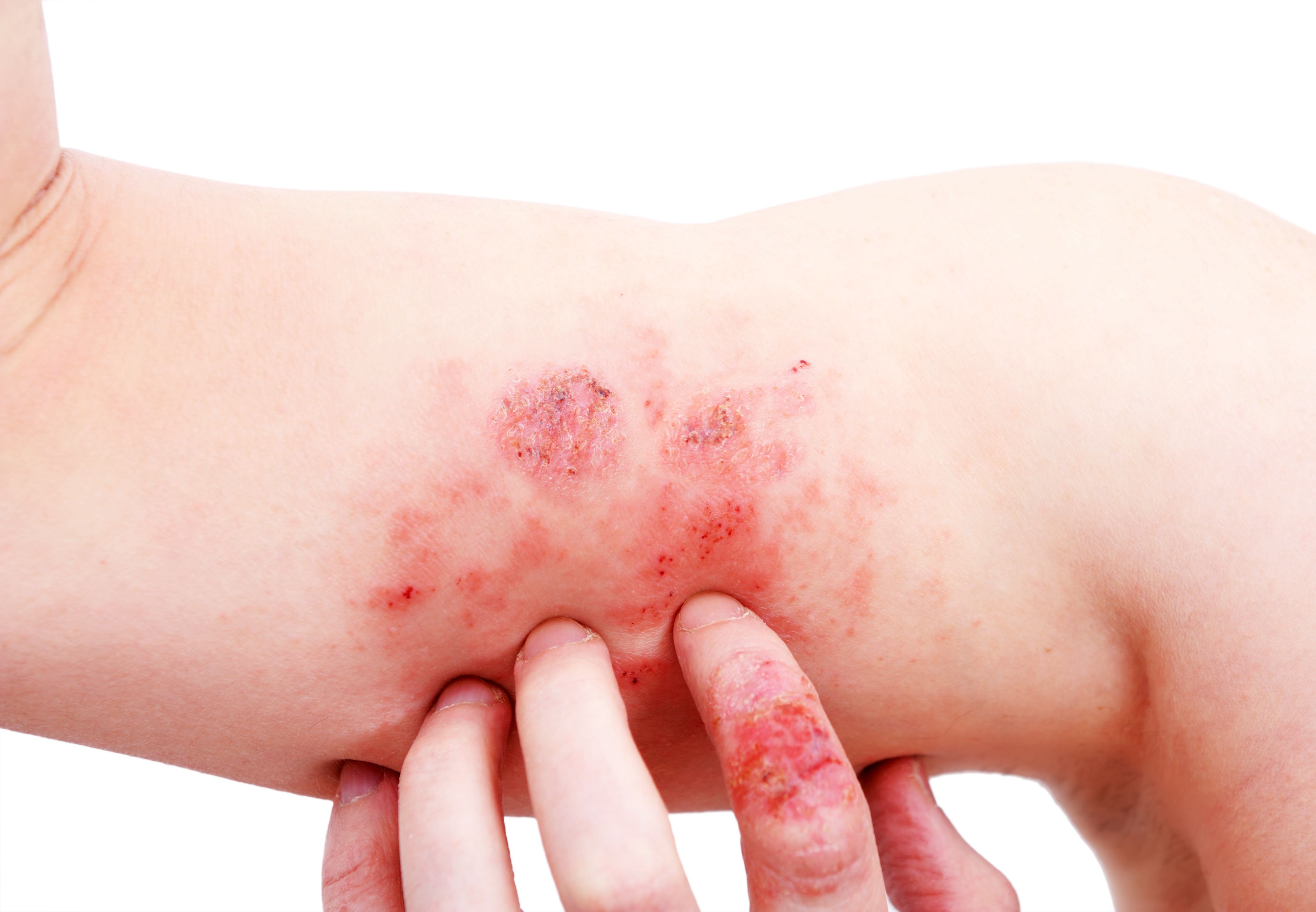- Center on Health Equity & Access
- Clinical
- Health Care Cost
- Health Care Delivery
- Insurance
- Policy
- Technology
- Value-Based Care
Upadacitinib Effective in Treating Patients With Moderate to Severe AD, Study Says
Adult patients with moderate to severe atopic dermatitis (AD) had a 1-year and 1.5-year upadacitinib drug survival of 91.5% and 80.2%, respectively.
Upadacitinib was effective in treating patients with moderate to severe atopic dermatitis (AD) after more than 1 year of continuous treatment, according to a study published in the Journal of Clinical Medicine.
The researchers explained that recent advances in AD pathogenesis have introduced more targeted treatments. These treatments include biological agents, like dupilumab and tralokinumab, as well as Janus Kinase (JAK) inhibitors, like baricitinib and upadacitinib.
Although the European Medicines Agency (EMA) recently approved upadacitinib to treat adult and adolescent patients with moderate to severe AD, they noted that no real-world studies have analyzed the drug survival of upadacitinib together with predictive factors of discontinuation in patients with AD; drug survival summarizes different aspects of treatment, such as patient satisfaction, safety, tolerability, and efficacy.
Consequently, the researchers investigated upadacitinib drug survival up to 1.5 years of follow-up and examined reasons for drug discontinuation and factors predicting discontinuation in adult patients with moderate to severe AD in a multicenter Italian real-world setting.
Upadacitinib was effective in treating patients with moderate to severe atopic dermatitis (AD) after more than 1 year of continuous treatment. | Image Credit: lial88 - stock.adobe.com

To do so, the researchers analyzed all consecutive patients affected by moderate to severe AD between the ages of 18 and 75 years receiving therapy with upadacitinib at 11 hospital-based dermatology departments in Italy between November 2020 and August 2023. They noted that all patients enrolled in the study received a baseline upadacitinib dose of 15 or 30 mg orally and applied daily emollients, while topical medium-to-very-high-potency corticosteroids or calcineurin inhibitors were utilized as required. Additionally, patient demographic and clinical information collected at baseline included age, gender, weight, height, and AD features.
AD severity was measured through the Eczema Area and Severity Index (EASI) with a range of 0 to 72, the Numeric Rating Scale (NRS) itch and sleep loss with a range of 0 to 10, and the Dermatology Life Quality Index (DLQI) with a range of 0 to 30. The researchers explained that they evaluated safety through a physical exam and laboratory analyses, such as full blood count, liver and renal function tests, and hepatitis B and C screening. Clinical outcomes were reported at baseline and weeks 4, 16, 32, 52, and 72.
The study population consisted of 325 adult patients with moderate to severe AD and a mean (standard deviation [SD]) age of 38.6 (15.6) years at the beginning of upadacitinib use. Notably, 198 patients (60.9%) were male, and 45 patients (13.8%) applied topical immunosuppressants at the beginning of therapy. Also, the baseline mean (SD) EASI score was 22.6 (11.3), and patients reported mean (SD) NRS itch and sleep loss scores of 7.6 (2.4) and 6.8 (2.6), respectively, and a mean (SD) DLQI of 14.6 (8.2).
Upadacitinib discontinuation occurred in 7.7% of the study population, mainly due to adverse events (AEs) (4.9%) and ineffectiveness (0.6%). Of the AEs, cutaneous or infectious diseases were the principal cause of withdrawal (1.5%), followed by blood test changes (1.2%) and infections (0.9%). The researchers noted that these AEs mainly occurred in the first months after drug initiation and were developed in adulthood.
Overall, in the study population, drug survival was 91.5% and 80.2% after 1 and 1.5 years of continuous upadacitinib treatment, respectively. When separating the survival analysis by the cause of drug withdrawal, the drug survival of upadacitinib owing to AEs was 94.1% and 89.6% after 1 and 1.5 years, respectively. Also, the drug survival with ineffectiveness as an event was 99.6% and 97.9% after 1 year and 1.5 years, respectively. Consequently, upadacitinib was effective in patients with moderate to severe AD after more than 1 year of continuous treatment.
The researchers acknowledged their study’s limitations, one being that they could not perform subanalyses of the predictors of upadacitinib survival by specific discontinuation reasons due to the limited number of patients included and drug interruptions. Also, the study population only consisted of Italian patients at select hospital-based dermatology departments, meaning that their findings may not be generalizable to the broader population. Despite these limitations, the researchers suggested areas for future research based on their findings.
“Upadacitinib provided rapid and long-term effectiveness, but also pointed to the need for a follow-up of patients,” the authors concluded. “However, additional information on a greater cohort of patients followed in the long-term will help to support these preliminary findings and to investigate the role of potential predictive factors for treatment discontinuation.”
Reference
Pezzolo E, Ortoncelli M, Ferrucci SM, et al. Drug survival of upadacitinib and predicting factors of discontinuation in adult patients affected by moderate-to-severe atopic dermatitis: an Italian multicenter analysis. J Clin Med. 2024;13(2):553. doi:10.3390/jcm13020553
